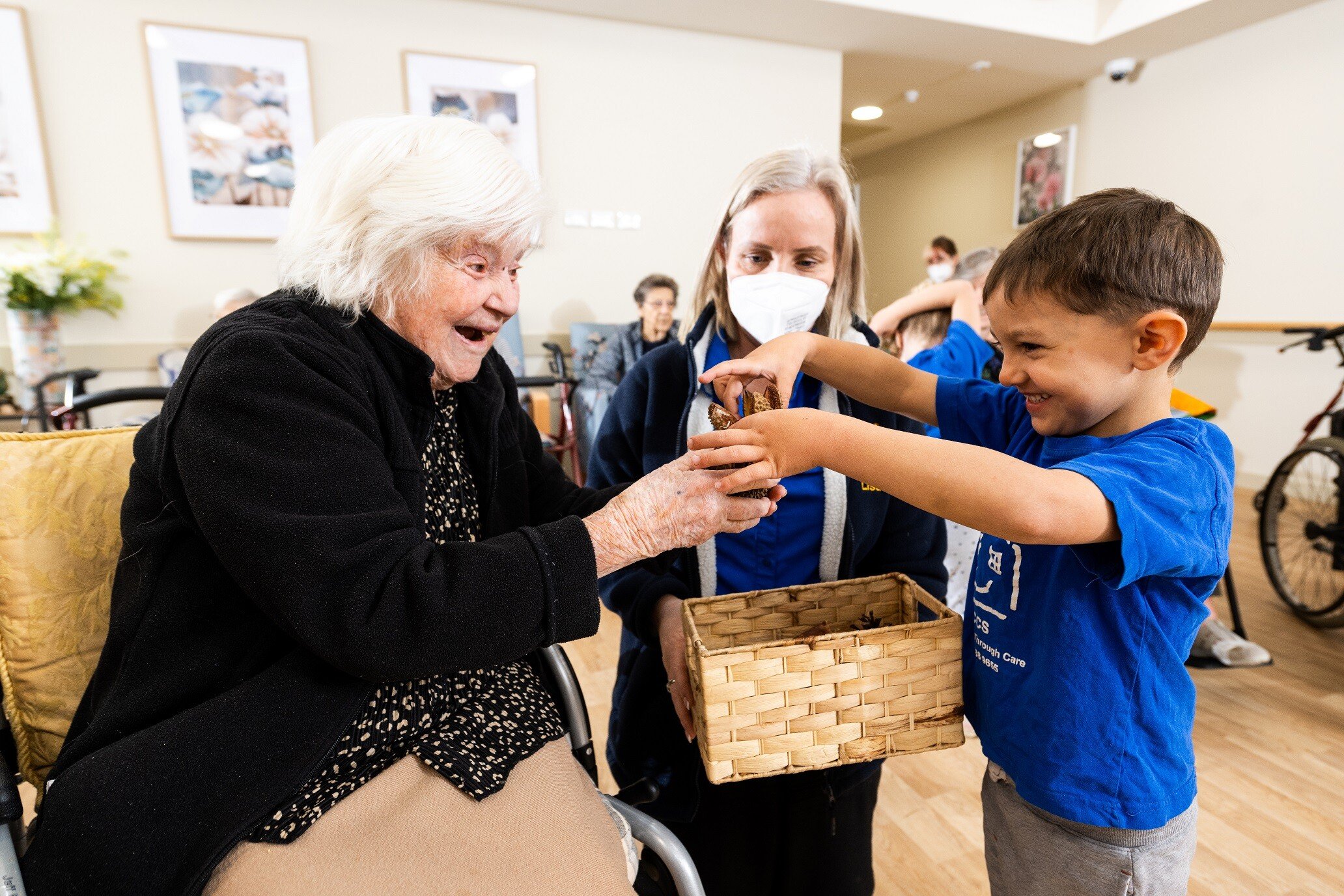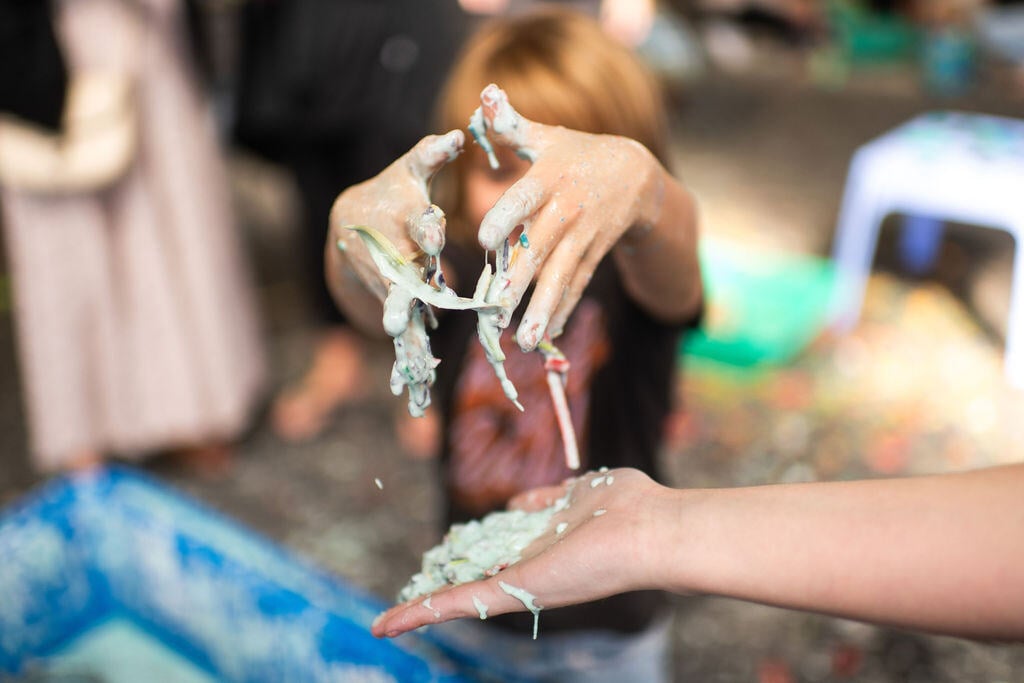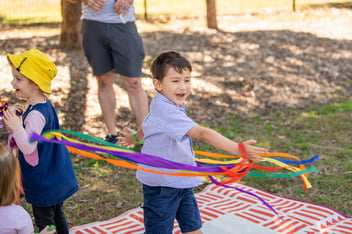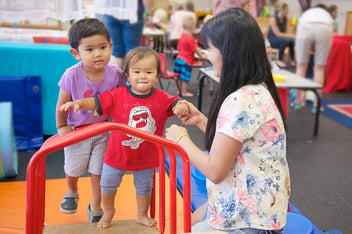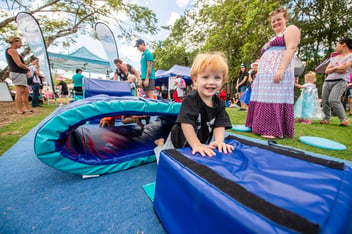
Physical Play and the Physical Development Stages in Children
Blog > Physical Play and the Physical Development Stages in Children

Physical Play and the Physical Development Stages in Children
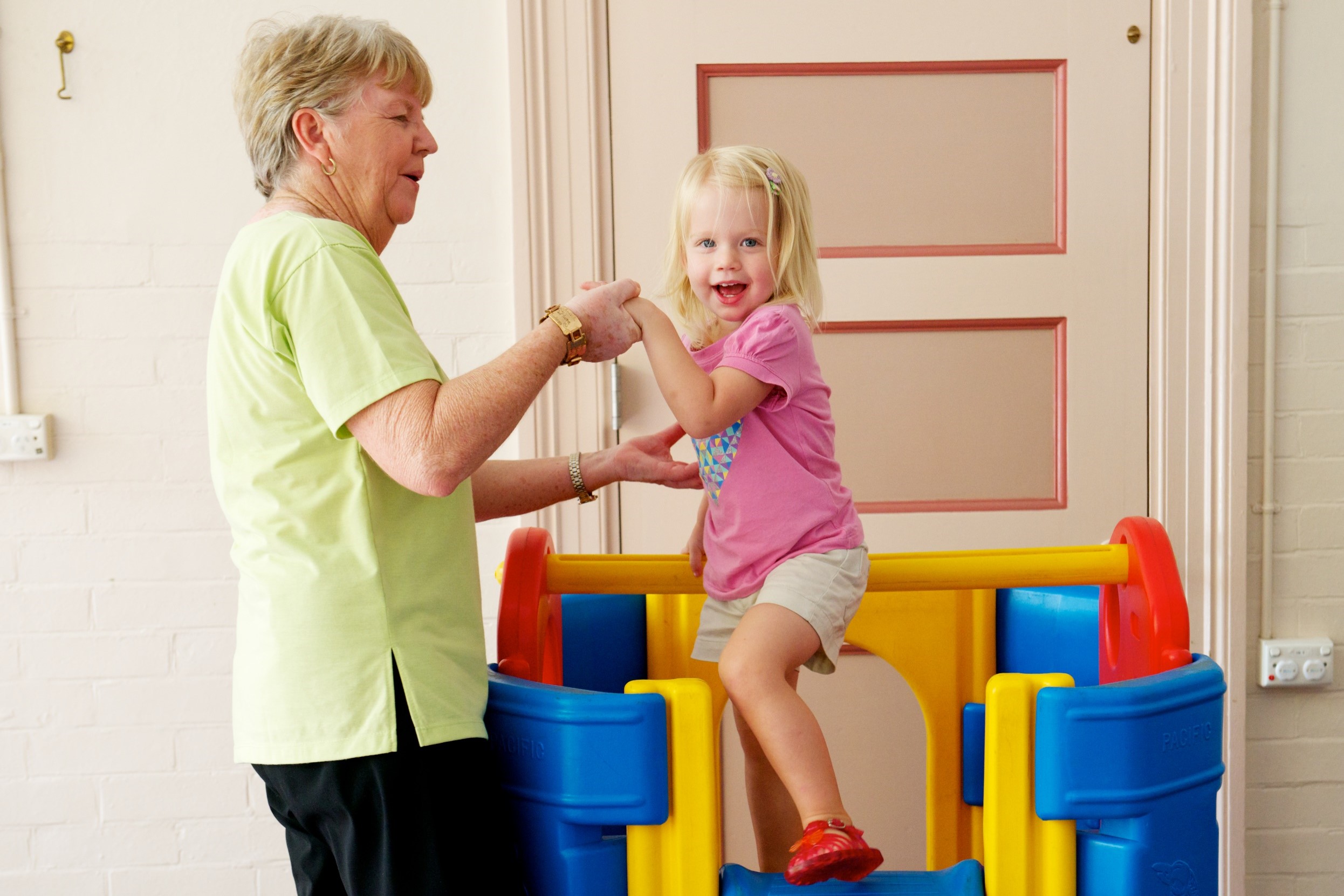
Physical play is an essential part of every child’s daily routine. Even as they engage in play on a smaller scale, children are strengthening important muscles and developing critical skills. Regular physical play, movement, and exercise can also help children develop active habits they will carry into adulthood. Physical play also supports children’s concentration, focus, social skills, and spatial awareness.
Through early stages of physical development, children are building both gross and fine motor skills. These motor skills refer to a child’s ability to coordinate small (fine) movements and large (gross) movements.
Fine motor skills relate to the control of hands and fingers, where gross motor skills refers to movements of larger muscles such as arms and legs. As children grow, so too do their muscles, strength, coordination, balancing, and dexterity. Play can be a way to support and engage these important milestones and is one of the most predominate ways children are engaging and using these essential skills.

Birth to 6 months
During this stage, children’s gross motor skills may include lifting and moving their head when on their stomach, rolling side to side or from their back or stomach, sitting with support and even raising up onto their forearms. Activities that incorporate tummy time are a great way to encourage development. Using toys, high contrast cards, or sensory materials while your baby has tummy time will strengthen neck, shoulder, and back muscles. Babies may also spend time sitting with support, and playing with blocks, singing or reading with a caregiver, or fingerpainting with support (remember, taste safe paints are a great option for this age).
Fine motor skills may look like babies reaching for objects, holding and using objects, scrunching and stretching their fingers and toys, holding and dropping objects and touching and patting. Sensory activities for babies encourage the use of these fine motor skills as they squish and scrunch materials in their hands. Materials like jelly and pudding are not only great for fine motor skills, and are fun to play with, they’re taste safe for young children who are exploring everything with their senses (especially their mouths). Incorporate play activities that encourage the grabbing, moving, dropping and handling of objects, and try using a variety of types of objects. Babies can grab and drop pom poms, move and stack blocks, or push and pat soft toys or balls.

Up to 12 months
As children progress their gross motor skills, they may begin to sit without support, crawl on their hands or knees (or even slide on their stomachs), pull themselves up to a standing position, stand up on their own, walk with help or take small steps, and develop some hand eye coordination. During this stage, activities that require larger, more controlled movements, can engage children’s muscles and attention. With support, children may kick and push large soft balls across the floor, reach for smaller items to play with, stand with support to engage with creative wall activities.
In their fine motor skill development, children start to pick up and move medium to large objects, exchange objects from one hand to another, engage with toys in both hands, pointing, and hand-eye coordination development. Sensory boards or floor sensory activities are great ways to engage children’s fine motor skills and hand movements, while allowing for some flexibility in preferred positions, such as on their stomachs, sitting with or without support, or while in a highchair. Small world play activities can engage children’s handling of objects as they move and exchange objects throughout the imaginative space. Activities that use cards and games and books allow children to point and connect with others. Creative painting activities can support children’s grasping and using of different objects, such as using fruits and vegetables for print making, or small cars to make paint-tracks.

Up to 18 months
Children may begin walking and standing on their own or with support. They may be taking the early steps toward running, moving their whole bodies in actions such as squatting and standing, and climbing. Children at this age may start to engage in larger scale games and play, such as hallway bowling or balancing games. Simple activities can be done at home with basic materials and some space. Using large couch cushions, children can strengthen muscles and skills by climbing, and overcoming obstacles. Activities that take place at tables or elevated troughs are also great at this time. Children can engage in waterplay, or sensory play, and travel easily between activities.
During this stage, children may be turning pages in a book, using small markers, crayons or pens to scribble, releasing items like balls or food, picking up small items with their thumb and forefinger, opening small boxes or books, and holding tools in their fist and using them such as spoons. Smaller scale activities such as colour sorting and water play provide children with opportunities to engage their minds while exercising smaller muscles and movements. As children engage in a number of sensory activities, providing small tools supports them as they begin picking up and dropping objects and using their fingers to ‘pinch’ and engage the same actions using tweezers and pipettes. Children may also begin reading and drawing with more independence.

Up to 24 months
At this age, children may begin to run, and have strong control over full body movements such as standing, sitting, crawling, climbing, balancing, and alternating step patterns. Activities that support this include balancing, which can be as simple as using masking tape or chalk on a flat surface for children to follow. Outdoor play is also a great way to follow children’s exploration of their movements. Children can use larger balls for kicking or throwing, and use larger, outdoor play equipment to climb, pull, stand and balance with support. Obstacle courses are also a great way to support children’s gross motor skills and cater to their ability and comfort level. Create a course using hoola hoops, stepping stones, climbing equipment, or even a skipping rope laid out to ‘walk across’ or tied between chairs to climb under and over.
Children are growing in their smaller scale capabilities, drawing lines, stacking small and large cubes, drawing shapes, holding objects, utilising tools such as spoons, and beginning to use tools such as forks. This stage may invite children to engage with different materials for drawing as they develop control on holding and moving objects – from chalk, markers, pencils or paint brushes, children may get used to different tools at different times and enjoy experimenting with different mediums. Free play with blocks encourages children to practice the movements that allow them to not only pick up and place objects, but place carefully to stack and build. Children can also engage in small, open-ended crafts to engage their fine motor skills.
-3.jpg?width=1840&height=1228&name=YARRABAH%20(24)-3.jpg)
2-3 years
Children are developing and building on their physical movements and capabilities. They may show balancing and stepping capabilities, putting on and removing items of clothing, and jumping with both feet off the ground. At this age, children can independently utlise skills in dress-ups and pretend play, putting on costumes and playing with toys as they work their gross motor skills. Stepping, jumping and balancing are becoming more second nature, and physical movement games like dancing, hopscotch, simple obstacle courses, are great ways for children to play. Child may develop the necessary skills to pedal and use larger toys such as bikes and push prams.
At this stage, children can draw lines and shapes like circles or triangles, string items together, hold objects while performing other tasks, use buttons and perform more complex actions such as twisting. Children may engage in more intricate play, such as threading with dry pasta and wool, turning objects like keys and whisks into imaginative play items, and buttoning and unbuttoning during dress-ups. Children may also be comfortable performing more complex tasks that require holding one object while engaging with another, such as holding paper while drawing and collecting items, holding some, and picking up additional objects.
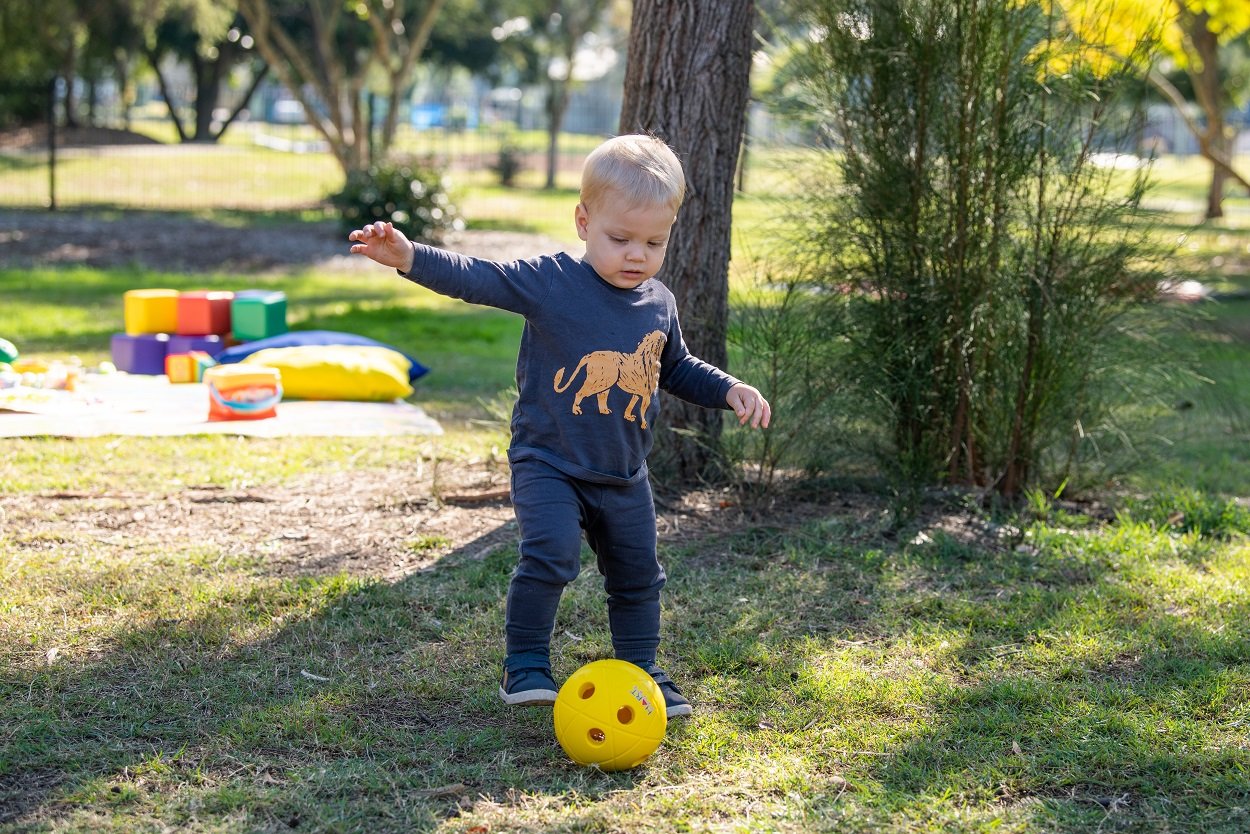
3-4 years
Children are learning to move their bodies in various ways, extending from running and balancing and hopping, jumping, and skipping. They may have more control and confidence in actions such as running, kicking balls, and moving or marching to music, demonstrating a basic understanding of rhythm. Encourage movement with music and create interesting activities to encourage different movements to flex their Gross motor skills. Mimic animals through different games, jumping like frogs, hopping like bunnies, taking big steps like elephants. Children may engage in more complex games to practice coordination as well as building important muscles, kicking and throwing balls at targets or nets.
At this stage of developmental growth, children may be buttoning and unbuttoning with increasing confidence, beginning to lace and tie shoes, use a tripod marker or pencil grip, and draw a variety of lines. Arts and crafts are a great way for children to practise and engage their fine motor skills. Provide materials for open-ended projects that allow children to play and engage by manipulating string, beginning to use child-safe scissors, moving glue sticks along paper, removing and returning caps of glue sticks and markers, and drawing simple lines and shapes. Children may also enjoy threading with dry pasta and string, paper weaving, and practise lacing their shoes.
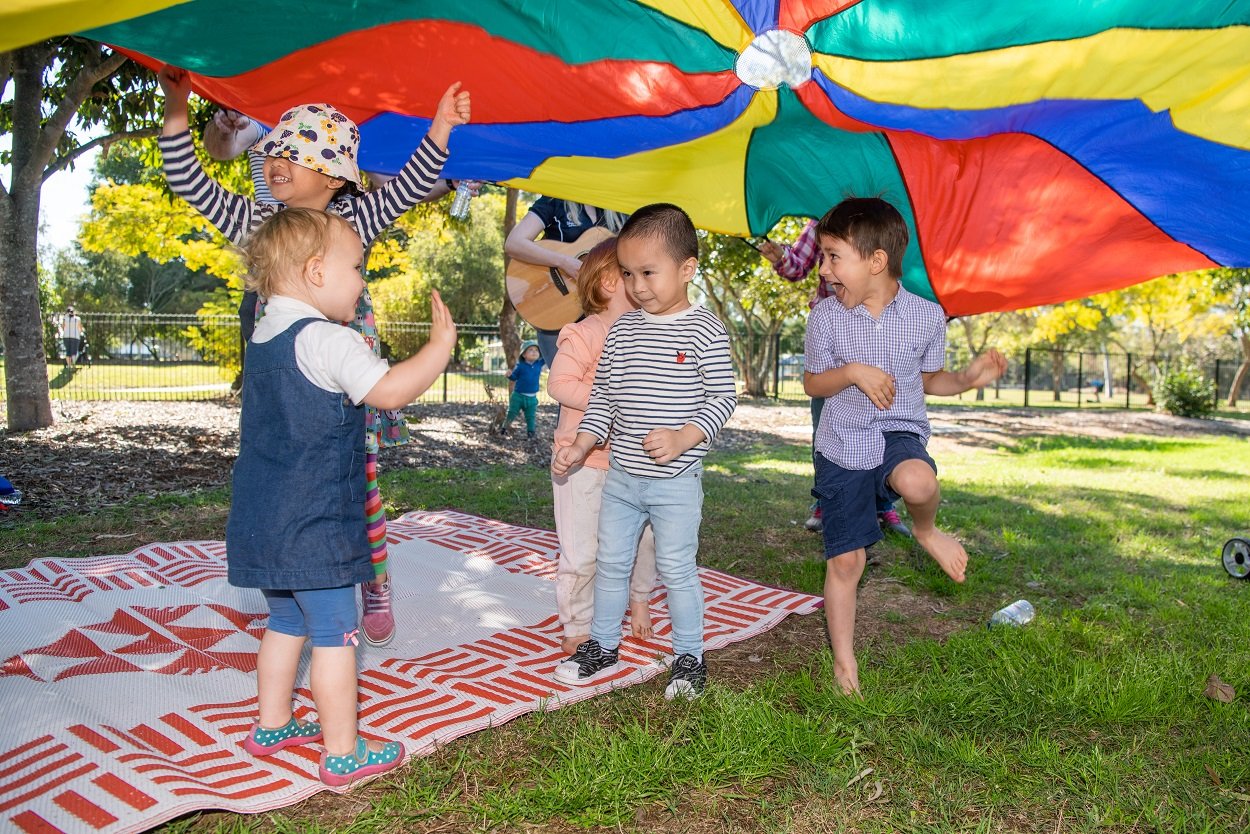
4-5 years
Children can confidently engage in a number of whole body movements. At this stage, they may be running, walking, squatting, climbing and jumping without support. They may develop the confidence and skills to hop on one foot, and catch and throw balls, balance with more confidence, and determine a preference for their left or right hand. Ball games are a great way for children to engage a number of muscles and improve hand-eye coordination. Children may throw and catch, playing with others or throwing and aiming at targets. Children can kick and push larger balls through obstacles or in goals. They may also use larger playgroup equipment to climb, slide, hold, and jump.
Children’s fine motor skills, at this stage, may demonstrate an ability to draw straight lines and shapes with more precision, forming letters, manipulating modelling clay, and cutting out shapes and lines with child-safe scissors. Engage children’s fine motor skills with purposeful sensory activities that build pre-writing skills. This might include sand writing, or gel letters, where children copy letters by forming them using their finger in sand or on a plastic sandwich bag with liquid inside. Children can also start drawing with more precision, so engaging in different kinds of drawing activities may support this. They may like to try drawing people, writing their name, and creating images using basic shapes.

Developmental Delays
A developmental delay is when children may not reach certain physical, emotional, social or communicative milestones when expected. It’s important to remember that all children are different, and all children’s capabilities can show up in various ways at various times. Developmental delays can be short term or long term. If you notice a developmental delay and are concerned, reach out to your healthcare professional.
Reference List
https://childdevelopmentinfo.com/child-development/physical-development-in-children-and-adolescents/
https://www.virtuallabschool.org/infant-toddler/physical-development/lesson-2
https://www.chop.edu/primary-care/developmental-milestones
https://raisingchildren.net.au/guides/a-z-health-reference/developmental-delay
Find a play experience near you:
Subscribe to our newsletter >
Related content:
Advertisement:
.jpg)
